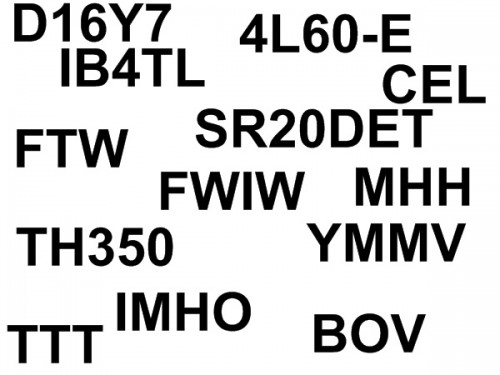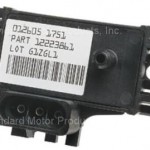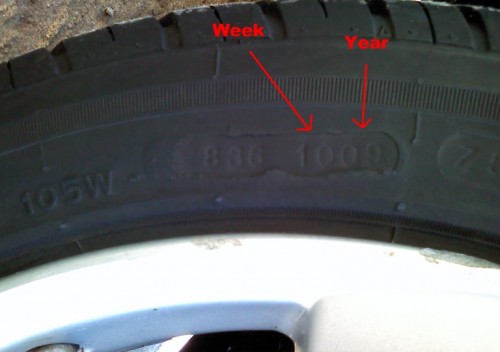If you are a member of an automotive forum / message board of any sort, you are no stranger to acronyms, abbreviations, and bizarre automotive lingo. Noob’s are often left overwhelmed and confused for weeks as they are hit with the automotive slang learning curve. Since I too was once an automotive forum newbie, I feel like it is my duty to share some of this slang with the masses. If you are so bold as to become a member of an automotive forum / message board, it will make your experience 10000x more fun and educational. Here we go…….
Engine names and sizes – Could be displayed in cubic inches, liters, or factory engine code. Engine code is typically a mix of letters and numbers.
General guidelines: Old cars = use cubic inches, newer non-performance cars = use liters, newer more performance-oriented vehicles = use factory engine codes.
Cubic Inches Examples: 289, 292, 307, 331, 348, 350, 401, 409, 429, 454, 472, 502, 572………etc….
Liters Examples: 1.8L, 2.0L, 2.2L, 2.4L, 3.0L 4.3L, 5.0L, 5.3L, 5.7L, 5.9L, 6.6L, 7.3L…..etc…..
Factory Engine Code Examples: LS1, SR20DET, 4G63, D16Y7, 13B-REW…..etc….
Transmissions – Almost always a combination of letters and numbers.
Examples: TH350, TH400, KM132, T-56, T5, C6, R-154, 4L60-E, 4T45-E
General Chat – These could be used for normal everyday terms
AFAIK – As Far As I Know
BBK – Big Brake Kit
BOV – Blow Off Valve
BRB – Be Right Back
BTDT – Been There Done That
BTW – By The Way
CAI – Cold Air Intake
CEL – Check Engine Light
DBW – Drive By Wire
DIY – Do It Yourself
FAQ – Frequently Asked Questions
FF – For Free
FS – For Sale
FTL – For The Lose
FTW – For The Win
FWIW – For What It’s Worth
GB – Group Buy
HID – High Intensity Discharge (Headlights)
HTH – Hope This Helps
IAC – Idle Air Control
IB4TL – In Before The Lock (When you know the forum moderators are going to lock the thread, you get in fast!)
IIRC – If I Recall Correctly
IMHO – In My Honest/Humble Opinion
ISC – Idle Speed Control
LMM – Losing My Mind
LOL – Laughing Out Loud
MAF – Mass Air Flow Meter
MHH – My Head Hurts
OBO – Or Best Offer
OEM – Original Equipment Manufacturer
ROFL – Rolling On Floor Laughing
TB – Throttle Body
TGFTT – Thank God For This Thread
TIA – Thanks In Advance
TTT – To The Top (Used to move your thread to the top of the page)
WOT – Wide Open Throttle
WUT/WAT/WHUT – What?!
WTB – Want To Buy
WTT – Want To Trade
YMMV – Your Mileage May Vary
YRMV – Your Results May Vary
As I come across more of these, I will add them to this list, so you can always reference it in a time of need. Acronyms FTW!






